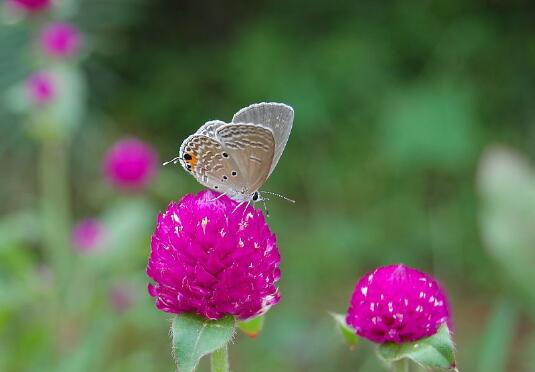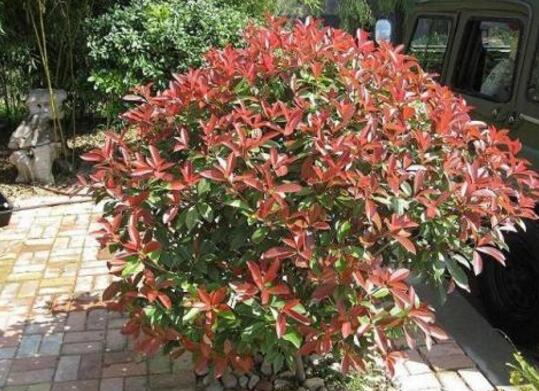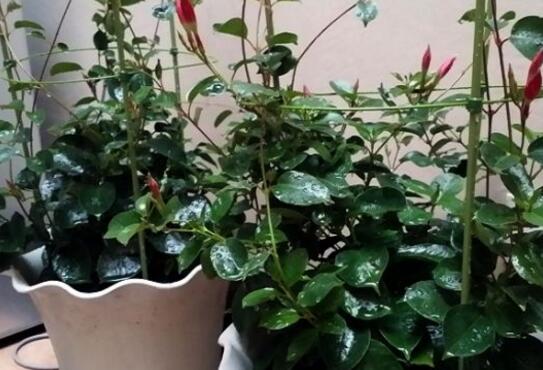When does thousand-day red blossom, maintain its flowering period / 4 months from July to October
Thousand-day red is a kind of highly ornamental flower plant, which can be seen in many gardens in our country. If we want to say that thousand-day red is the most ornamental moment, it must be when it blossoms, then when will it blossom? What do you need to do to maintain the flowering period of thousand-day red? Next, the editor will take you to learn about it.

When will Qianrihong blossom / July-October
About when the thousand-day red blossoms, in fact, it is usually around July every year. Its flowering period is from July to October, and there are four months. The flowering period of thousand-day red flowers is relatively long among flowers and plants, and it is a kind of flower that can be watched for a long time. However, if you want to keep its florescence so long, the maintenance of florescence can not be careless at all. The specific maintenance methods are below, and we go on to look at them.
Second, the maintenance of the flowering period of thousand-day red
1. Fertilization requirements
Fertilizer is a very important nutrient in the flowering period of thousand-day red, because flowering needs to consume a lot of nutrients, so it must be replenished in time, and fertilizer should be applied regularly, but we should remember that when applying fertilizer, fertilizer must be diluted with water before applying, otherwise it may lead to the phenomenon of wilting of thousand-day red flowers.
two。 Watering requirement
During the flowering period of thousand-day red, it is still the hottest period of the year, and the water evaporates relatively quickly, so we must water it frequently, basically once a day, so that it can also make the thousand-day red flowers bloom more brightly.
3. Lighting requirement
In the maintenance of the flowering period of thousand-day red, light is also a more important point. Thousand-day red is a kind of light-loving plant, so we must keep enough light, because thousand-day red is a flower native to the tropics. so the more light it has, the better it will grow and the better the flowers will bloom.
4. Pest control
In the flowering period of thousand-day red, if you do not pay much attention to conservation, it is very easy to have bad phenomena such as diseases and insect pests. When this kind of phenomenon occurs, we must deal with it in time, and you can refer to the complete book on pest prevention and control of thousand-day red. Here, the editor will not introduce too much.
Introduction of the breeding method of Qianrihong and matters needing attention in maintenance
Thousand-day red is a very beautiful ornamental flower, its flowers and green leaves complement each other, giving people a sense of harmony and beauty. The thousand-day red flower is like a small fluffy ball, very lovely. When blooming, it is very beautiful. Today, I will take you to learn about the breeding methods and matters needing attention of Qianrihong.
Culture method
1. Light
Thousand days like the sunny environment, in the maintenance process, to ensure that not less than 4 hours of direct sunlight every day. The maintenance site should not be too shady, otherwise the plant will grow slowly and the flower color will be dim. If you happen to meet one day in the thousand-day red seedling stage, you can use fluorescent lamps to make up the light.
two。 Watering
Qianrihong likes slightly wet, dry soil environment, more resistant to drought, watering would rather dry than waterlogging. In the growth stage of seedlings, especially in the time of long leaves, watering should be properly controlled, and the amount of water can be increased properly after flower bud differentiation to ensure the normal growth of flowers.
3. Fertilizer application
Qianri Hongxi fertilizer, in addition to adding sufficient base fertilizer to the soil during planting, applying phosphorus and potassium fertilizer every half a month during the peak growth period can not only promote plant growth, but also enhance resistance and reduce infection.
4. Temperature
Thousand-day red is suitable for growth at a temperature of about 18-22 degrees Celsius. It likes sunshine and likes a ventilated, hot and dry environment.
5. Soil
Thousand-day red can choose loose, fertile and good drainage soil for planting, can use soilless medium soil or the mixture of peat and garden soil can be used.
Matters needing attention
1. Thousand-day red grows rapidly, and when the seedling grows to 15 centimeters, it picks the heart once to promote branching. After that, the second coring was decided according to the growth of the plant, and the plant type and florescence were controlled. In addition, the yellowing and wilting leaves should be cut off in time during the growth process, and the branches and leaves should be thinned properly to ensure the beautiful plant shape.
2, after flowering, this is a stage that everyone is easy to ignore, mainly to keep the pot soil slightly tidal, do not water from the top down, to avoid flowers stained with water. Stop fertilizing during flowering to ensure sufficient light. Cut off the flower branches in time after flowering to promote re-branching and flowering.
3. A thousand days of red often yellowing is a blight disease, which should be prevented, disinfected in time before planting, and be irrigated with fungicides when the disease occurs.
The above are the breeding methods and matters needing attention of Qianrihong. I hope it can be helpful to the majority of flower friends. Please continue to pay attention to the succulent flower bed and learn more about flower conservation.
Thousand-day red family pot care to point a thousand-day red pot to keep moist, and pay attention to shade. Topdressing is carried out in combination with watering during the growing period. This flower has lax requirements on fertilizer, water and soil, and its management can be more extensive. After pruning and pruning, the residual flowers can still sprout new branches and blossom again in late autumn, but more thin fertilizer should be applied.
- Prev

Is Photinia mandshurica toxic? the key points of bonsai production technology / soil is very important.
Photinia rubra is a common green belt plant because of its high ornamental value, but for some people who want to plant it indoors, the more concerned problem is toxicity, so is Photinia rubra poisonous? Is the indoor pot of red leaf heather suitable? With these questions, let's find the answers.
- Next

Is hibiscus poisonous? can hibiscus be raised indoors / non-toxic can be raised indoors
It is well known that hibiscus flower has distinct characteristics, it will change from crimson to white and then to purple, so hibiscus flower language also contains loyal and changeable character. However, for flower friends, there are two questions that are more concerned: is hibiscus poisonous? Can hibiscus be kept indoors? The following editor will tell you the answer.
Related
- Fuxing push coffee new agricultural production and marketing class: lack of small-scale processing plants
- Jujube rice field leisure farm deep ploughing Yilan for five years to create a space for organic food and play
- Nongyu Farm-A trial of organic papaya for brave women with advanced technology
- Four points for attention in the prevention and control of diseases and insect pests of edible fungi
- How to add nutrient solution to Edible Fungi
- Is there any good way to control edible fungus mites?
- Open Inoculation Technology of Edible Fungi
- Is there any clever way to use fertilizer for edible fungus in winter?
- What agents are used to kill the pathogens of edible fungi in the mushroom shed?
- Rapid drying of Edible Fungi

